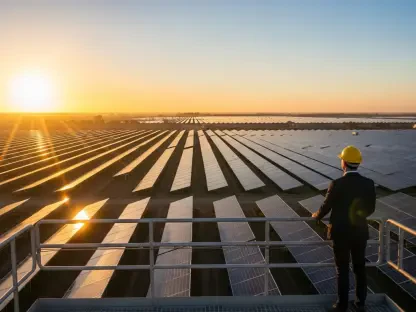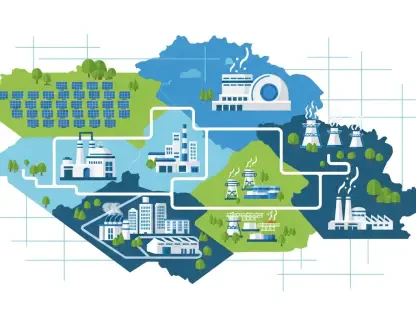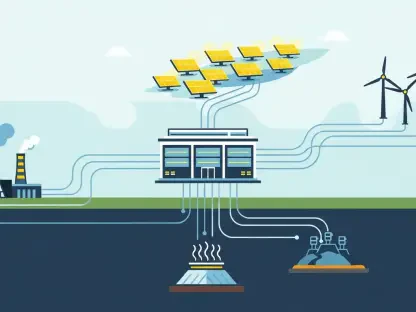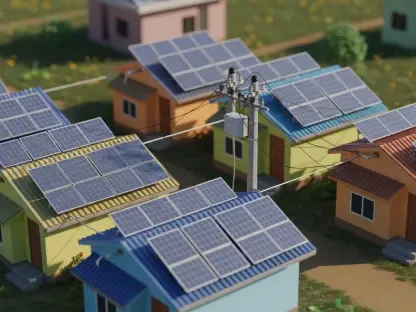In the shifting landscape of energy policy, Christopher Hailstone stands out for his deep understanding of renewable energy and electricity delivery. As the U.S. Senate revisits policies on rooftop solar incentives, navigating the complexities of tax credits and legislative adjustments is crucial. Christopher provides expert insights into the current discussions, potential impacts, and future of clean energy initiatives.
Can you provide more details about the adjustments being made to the residential solar energy incentive?
The Senate is currently looking into modifying the residential solar energy incentives that were previously removed in earlier versions of the bill. The intention is to revisit how tax credits for residential solar systems can be maintained or adjusted to encourage more homeowners to adopt solar energy. These adjustments might include altering the percentage of tax credits or redefining eligibility criteria to make the incentives more accessible and attractive.
What specific changes are being discussed in the Senate regarding rooftop solar tax credits?
Senators are reportedly considering changes that may reinstate the 30% tax credit for homeowners investing in rooftop solar panels. Other discussions involve potentially revising the structure and duration of these credits, aiming for a more gradual phase-out, rather than an abrupt end, which was initially proposed in the House version of the bill.
Why were the rooftop solar incentives eliminated in previous versions of the “One Big Beautiful Bill”?
The incentives were eliminated largely due to concerns over fiscal impacts and a push for budget cuts. Some lawmakers believed that revising the incentives could streamline federal support for clean energy, but the lack of these credits has raised significant concern given the importance of fostering renewable energy industries for economic and environmental benefits.
How does the Senate’s approach to tax credits differ from the House’s version of the bill?
The Senate appears to be taking a more generous approach, as Senator Cramer pointed out, potentially offering extended timelines for the tax credits. Unlike the House, which proposed a sudden phase-out, the Senate is discussing a more measured approach, allowing for an off-ramp that gives the industry and consumers time to adjust.
Are there any expected outcomes from reinstating or adjusting these solar incentives?
Reinstating or modifying these incentives is expected to stimulate investments in the solar industry and bolster job creation. It could also lead to lower energy costs for consumers by encouraging a broader adoption of solar energy solutions, contributing to an overall positive economic impact.
Can you explain the potential impact of removing these tax credits on consumers and the solar industry?
The removal of these tax credits could dampen consumer interest in solar installations due to higher upfront costs, slowing down industry growth. Solar companies might see decreased demand, which could lead to reduced investments in innovation and infrastructure, eventually affecting employment within the sector.
How are congressional leaders and administration officials involving themselves in the process of passing the OBBB?
Leaders and officials are actively lobbying and negotiating with lawmakers, stressing the bill’s importance both economically and politically. They are highlighting the potential investment returns and public benefits of maintaining robust renewable energy incentives as part of a broader national energy strategy.
From your perspective, why is it important for President Trump to sign the bill into law before the July 4th holiday?
Signing before the holiday is strategic in terms of public relations and demonstrating governmental efficiency. It presents the administration as committed to clean energy and economic growth, potentially boosting public confidence and offering momentum ahead of mid-term elections.
What groups are pushing for improvements in the bill’s language, and what are their main concerns?
Groups representing renewable energy producers and environmental advocates are pushing for better language to ensure a sensible transition without sudden disruptions. Their main concerns include protecting investments, maintaining job growth, and ensuring that power remains affordable for consumers while continuing to progress towards a sustainable future.
How might the abrupt phase-out of IRA tax credits affect renewable energy investments and job markets?
An abrupt phase-out could lead to a significant investment decline in renewable energy projects. Job markets might also suffer due to reduced growth in sectors that are key to the clean energy transition. A phased approach would mitigate these risks by providing stability and predictability for investors and employers alike.
Could you elaborate on the discussions around creating an “off ramp” for phasing out tax credits more gradually?
The off-ramp discussions involve implementing a structured timeline for reducing tax credits. This approach would ease the transition for both industry players and consumers, allowing for longer-term financial planning and reducing sudden economic impacts that can come with abrupt policy changes.
What are the potential economic implications of the adjustments being considered for these solar incentives?
The adjustments could lead to increased solar installations, boosting the green economy and supporting technological advancements. This would likely enhance the competitiveness of the domestic solar industry, promote job growth, and advance the country’s clean energy goals, ultimately leading to broader economic benefits.
How do you think these proposed changes will influence future investments in clean energy?
If implemented, these changes could set a strong precedent for future investments in clean energy by creating a more stable and attractive market. Consistent policy support boosts investor confidence, potentially leading to greater financial commitments from both domestic and international investors.
Has there been any feedback from the solar companies regarding the ongoing discussions in the Senate?
Solar companies have been cautiously optimistic, with many encouraged by the Senate’s more favorable outlook compared to the House. There is a general hope that maintaining or enhancing incentives will revive affected market shares and help restore investor confidence.
Are there any other significant clean energy initiatives being considered in the Senate outside of the solar incentives?
While the focus right now is on solar incentives, the Senate is also looking at broader strategies to promote clean energy, including subsidies for wind energy projects and infrastructure spending to enhance grid reliability. These initiatives underpin a comprehensive approach to diversifying and strengthening the energy sector.
Do you have any advice for our readers?
Stay informed about how energy policies may change in the near future and consider how these changes could impact utility costs and home investments. For those interested in minimizing their carbon footprint, keeping an eye on available incentives will be crucial to maximizing financial and environmental returns from renewable energy choices.









